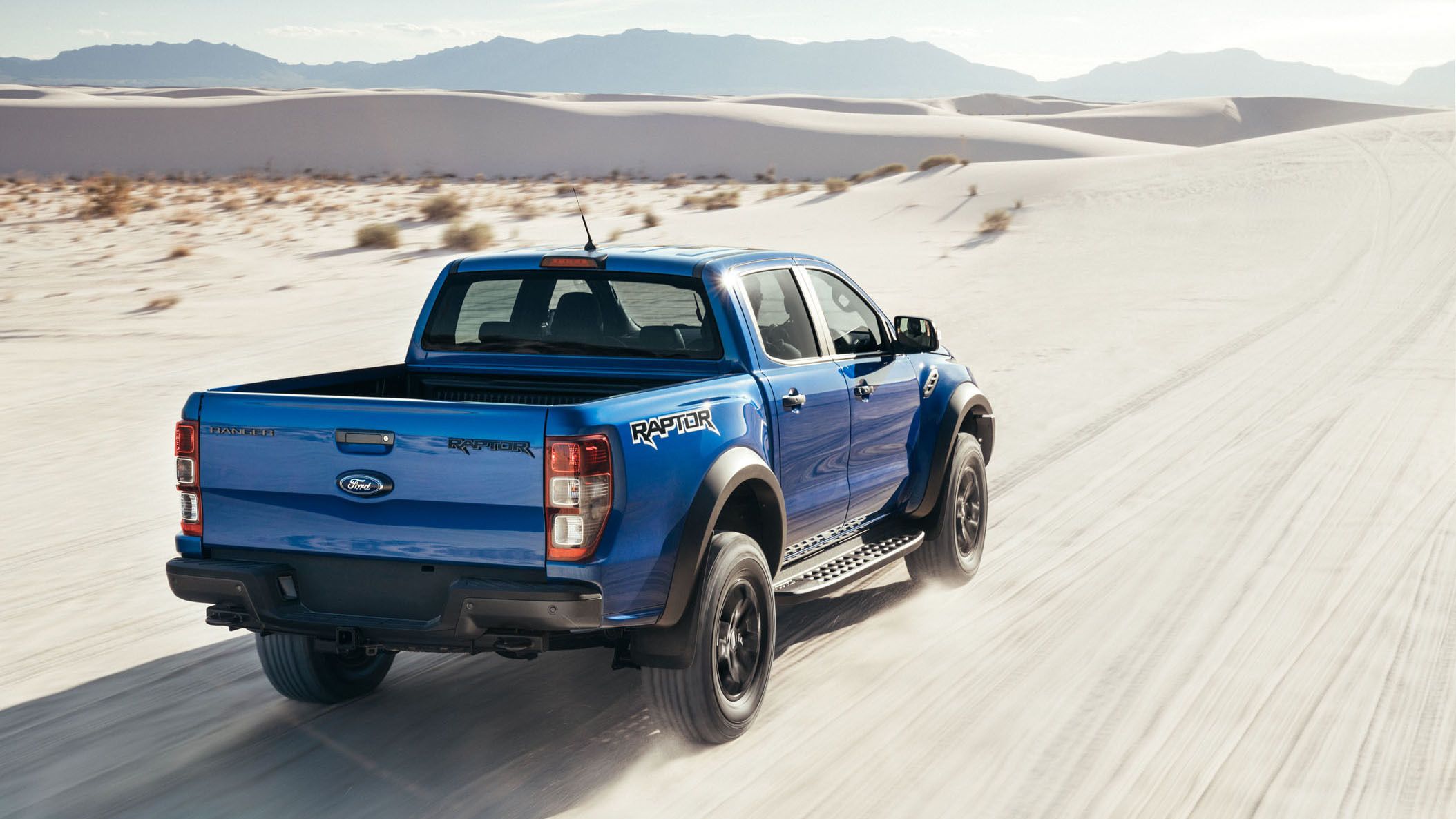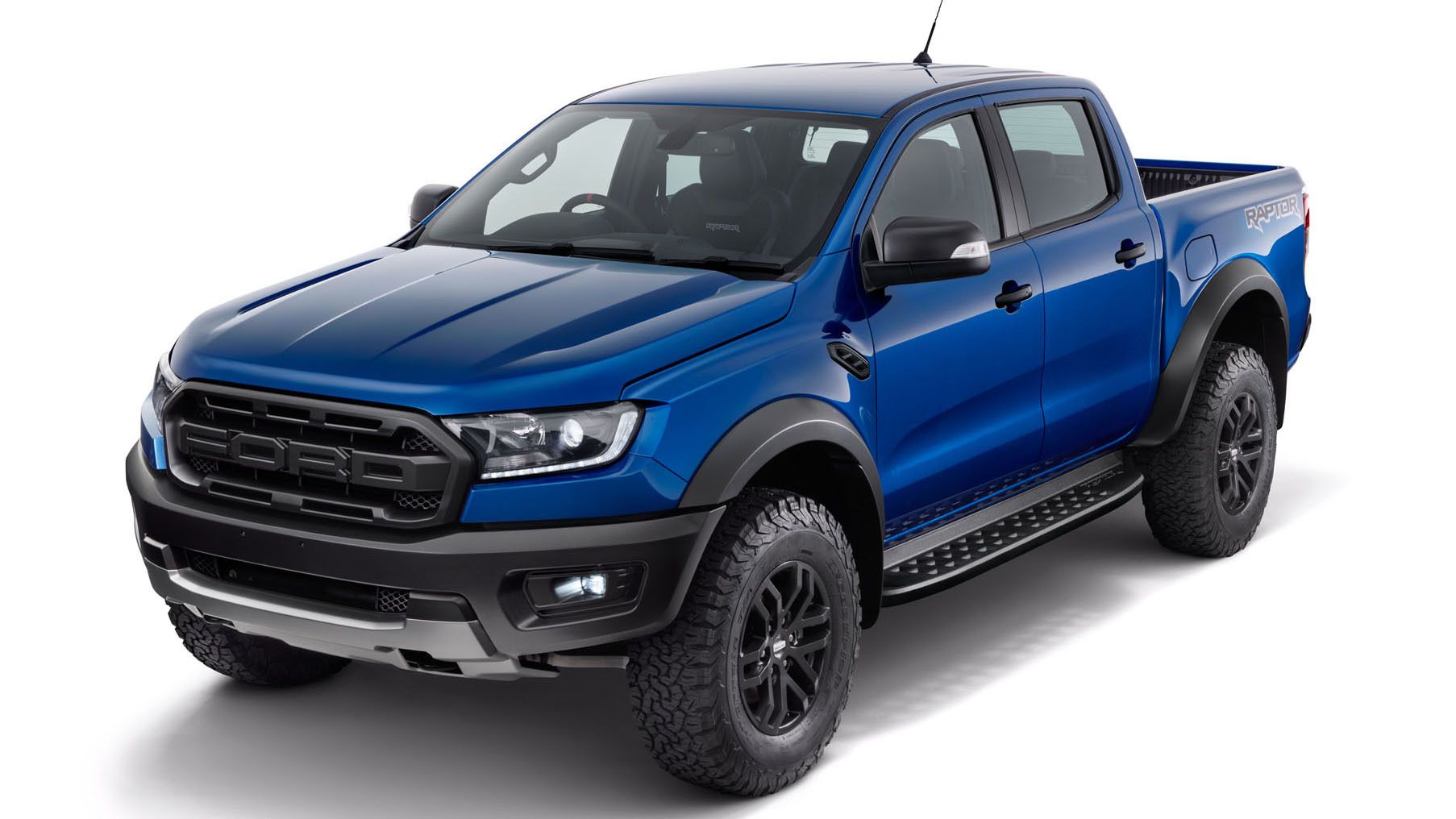Ford has finally pulled the covers off its much-anticipated 2019 Ranger Raptor. This is the hard-core off-road version the world has waited for. It boasts many similar attributes to its big brother, the Ford F-150 Raptor, but benefits from a smaller size, a Watt’s link and coil spring rear suspension, and a twin-turbodiesel powerplant. The debut event took place in Bangkok, Thailand, where pickups are extremely popular. And while Ford hasn’t admitted it yet, the Ranger Raptor will arrive in the U.S. Keep reading to learn all about it.
|
|
ids=758150,765831 |
no_overlay=true> |
Compared to the conventional Ranger, the new Raptor is wider and taller. New fenders cover the 285/70R17 BFGoodrich All-Terrain T/A KO2 tires. The fenders are composite, too, which Ford says will resist trail damage. And like the F-150 Raptor, the Ranger Raptor boasts a new grille with the F-O-R-D lettering and a steel bumper with a high approach angle of 24 degrees. The departure angle also measures 24 degrees thanks to the new rear bumper. Ground clearance measures in at an impressive 11.1 inches. Both front and rear bumpers have easy-access recovery points, just like the F-150 Raptor.
Naturally, the Ranger Raptor uses Fox Racing shocks. Both front and rear have 46.6mm pistons for ruggedness over terrible driving conditions. The front suspension uses a familiar aluminum upper and lower control arms while the rear suspension uses something not seen on American trucks – a Watt’s link. In a nutshell, the connection keeps the solid rear axle located in the same horizontal position regardless of its vertical travel. What’s more, Ford uses coil springs and control arms to both dampen and locate the axle, not to mention those Fox Shocks.
Most surprising is the Ranger Raptor’s new powerplant. Ford is debuting an all-new 2.0-liter bi-turbo four-cylinder turbodiesel. This high-tech engine is unlike anything currently found in the Ranger. The dual turbo setup includes both high-pressure and low-pressure turbos for a quick spool-up and massive airflow. The result is 210 horsepower and an impressive 369 pound-feet of torque. Comparatively, the Chevrolet Colorado’s 2.8-liter turbodiesel makes 181 horsepower and 369 pound-feet of torque. Not surprising, however, is Ford’s use of its new 10-speed automatic transmission.
The Ranger Raptor inherits the F-150 Raptor’s drive modes, too. For on-road performance, there is Normal and Sport modes. When it comes to off-road, there is Grass/Gravel/Snow, Mud/Sand, Rock, and Baja modes.
Inside the truck, the interior is updated with suede covered seats and steering wheel. The wheel features the familiar red, on-center marker and thick grips. The seats are heavily bolstered and have leather side accents that make getting in and out easier. The suede center section, combined with the thick bolsters, should do a fantastic job at holding the driver and front passenger in place.
While Ford hasn’t mentioned any details about a U.S.-spec Ranger Raptor, we know the time is coming. Mike Levine, Ford’s main man with Product Communications in North America, said on his Instagram that, “Today’s announcement is about the launch of the new Ranger Raptor in Asia Pacific markets. We’ll have more to share about Ranger Raptor at a later date.”
Of course, pricing hasn’t been announced either, even in for the Asian Pacific markets. We’ll keep you updated as new information becomes available.
References
Ford Ranger
Read our full review on the 2019 Ford Ranger Raptor.
Read our full review on the 2019 Ford Ranger.
Read our full review on the 2018 Ford F-150 Raptor.
Read more Ford news.


